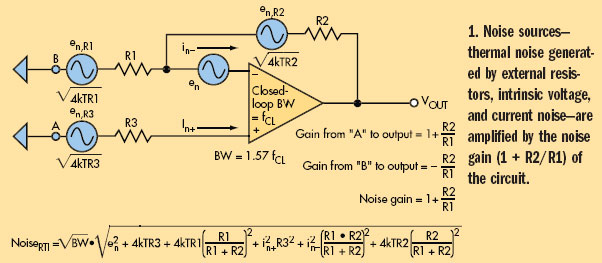Both inputs of the DUT are grounded. There shouldn't be any current flowing through the 10ohm resistor and the 100Kohm resistor, as there is no voltage source.
Wrong - the internal voltage noise source of the inputs is therealways present and that is what is being tested by putting the amplifier into a gain of 10,000.
Here is a more general view of op-amp noises: -
The noise source that(implied by the circuit in the question) that is specifically testingbeing tested for is labelled \$e_n\$ in the diagram above.
These number do not exactly match with the description of the circuit (0.1Hz - 10 Hz), but perhaps it's close enough.
They are using two filters at 16.8 Hz which together produce a 3dB point of 10.8 Hz. Having said that this will have a noise bandwidth of 12 to 13Hz (not an exact science) so it's a little too much beyond the 10 Hz limit in my book - this calls into question the guy who designed it.

